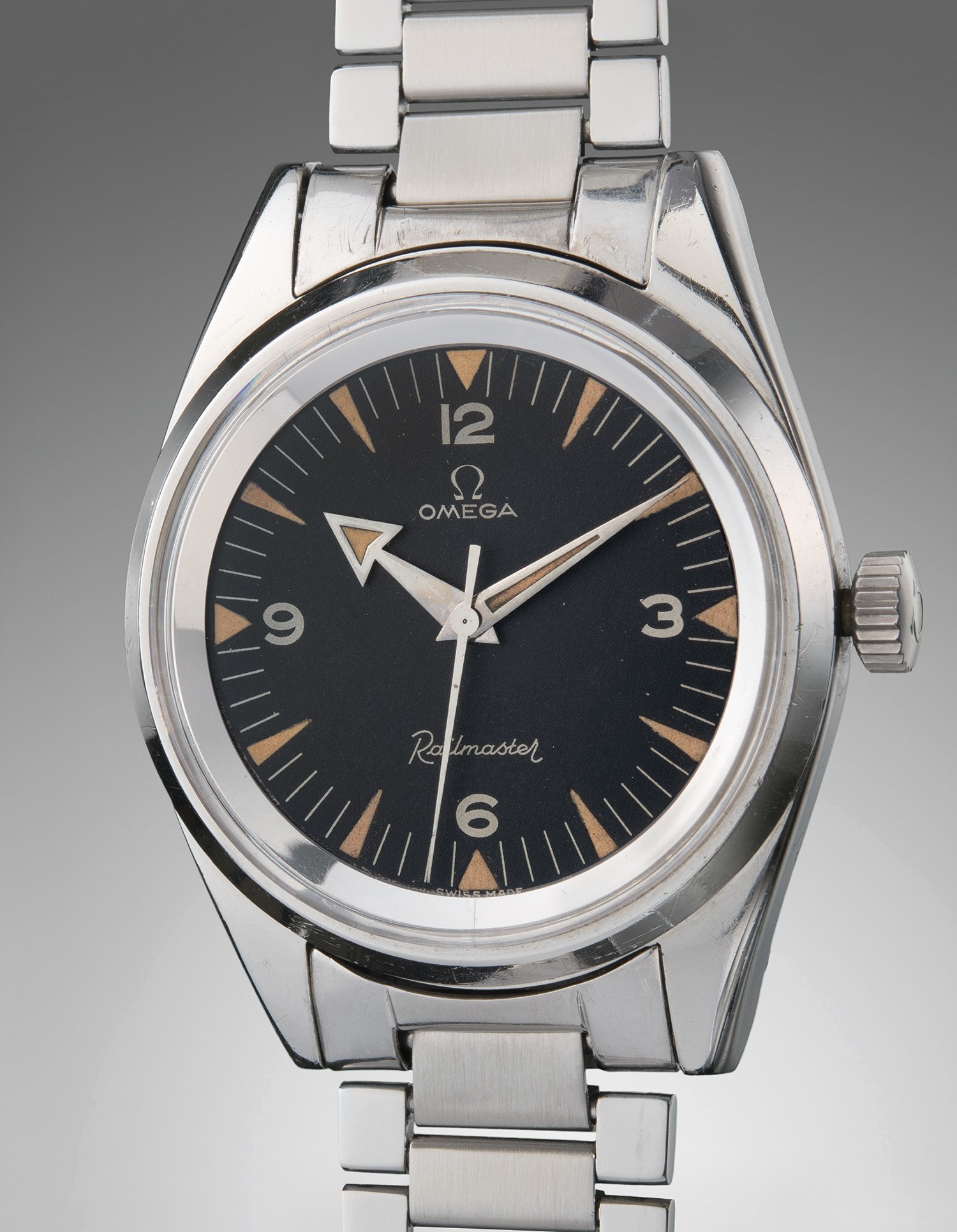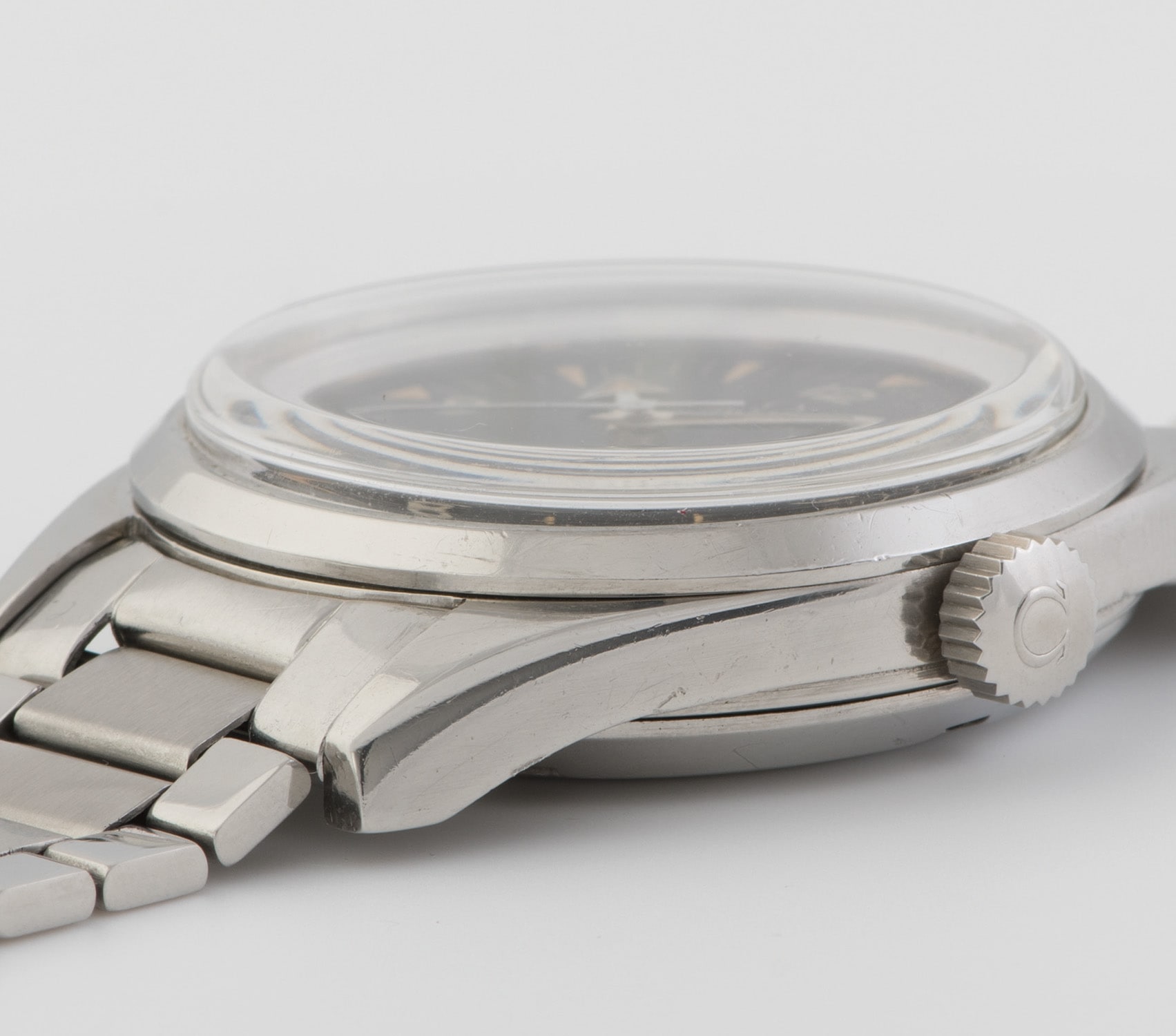



48
Omega
Ref. 2914-1
Railmaster
An extremely rare, large, and well-preserved stainless steel anti-magnetic wristwatch
Full-Cataloguing
The first Railmaster was manufactured with the ability to withstand between 900 and 1000 gauss, specifically for those in professions required to withstand magnetic fields beyond what is considered normal. Many vintage watches in the modern age, however, can be affected by magnetic fields through innocent actions such as air travel and exposure to everyday electronics such as laptops. According to advertisements of the time, the Railmaster was targeted to “scientists, technicians, electricians, etc., who worked in close proximity to electrical currents.” Additionally, the Railmaster was water-resistant to 60 meters, or 200 feet.
The classic "broad arrow" hands, sharp, dagger-like luminous indexes, and beautiful matte black dial – all original and in superb condition in the present lot - is typical of the Railmaster, Seamaster and Speedmaster, though the Railmaster design is the simplest of them all, with no diving or tachymeter bezel. Its case measures a large 38 millimeters in diameter, thanks in part to the presence of a soft iron inner case. Inside ticks a noteworthy time-only movement with sweep seconds – the caliber 285, used only from 1957-1958. The inner case providing anti-magnetic protection of the movement, was made of "mu-metal" a nickel-iron alloy, acting as a Faraday cage. Early Railmasters such as the present lot did not feature caseback engravings, and the dial itself was 1.0 millimeter thick, as opposed to the 0.4 millimeter thickness found on later dials.
Despite a lukewarm reception at its launch, modern revivals of the Railmaster remain popular, and a focus on anti-magnetism remains central to Omega’s current offerings. In fact, it was this exact model, the 2914-1, that Omega used as the tomographical blueprint for the reissue of the 1957 Trilogy 60th anniversary limited edition piece, released in 2017 to much fanfare. Finding another in such original and appealing condition is no easy feat, rendering this a very rare opportunity for the collector of vintage watches to own a best-in-class example of a landmark reference from the storied Omega brand.
Omega
Swiss | 1848Omega's rich history begins with its founder, Louis Brandt, who established the firm in 1848 in La Chaux de Fonds. In 1903, the company changed its name to Omega, becoming the only watch brand in history to have been named after one its own movements. A full-fledged manufacturer of highly accurate, affordable and reliable watches, its sterling reputation enabled them to be chosen as the first watch company to time the Olympic Games beginning in 1932. Its continued focus on precision and reliability ultimately led their Speedmaster chronograph wristwatch to be chosen by NASA in 1965 — the first watch worn on the moon.
Key models sought-after by collectors include their first, oversized water-resistant chronograph — the reference 2077, early Speedmaster models such as the CK 2915 and 2998, military-issued versions of the Seamaster and oversized chronometer models such as those fitted with their prestigious caliber 30T2Rg.